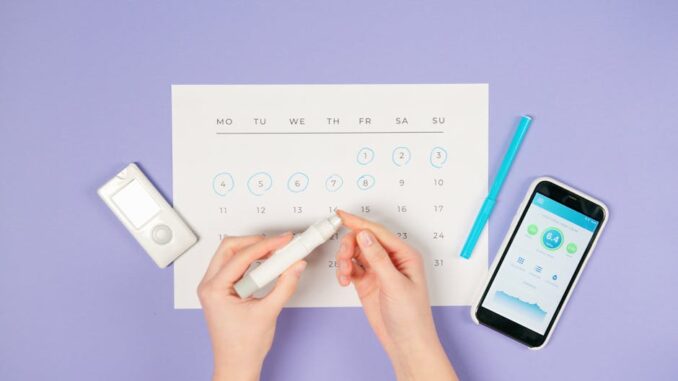
Summary
This article discusses a recent study highlighting the effectiveness of telehealth and primary care in providing advanced diabetes care. Researchers found that patients using advanced insulin technology, trained by primary care providers or via telehealth, achieved similar positive outcomes as those trained by specialists in person. This breakthrough expands access to crucial care, especially in underserved areas, empowering individuals with diabetes to manage their condition effectively and lead healthier lives.
** Main Story**
Okay, so there’s some really interesting research coming out about diabetes care, and I think it’s a game-changer, especially for those of us trying to improve access in, well, less accessible areas. This new study, published in Clinical Diabetes, basically says that people with diabetes can get just as good results with fancy insulin tech if they’re trained by their regular primary care doctor (PCP) or through telehealth, as they would seeing a specialist in person. Can you believe it?
The Big Picture: Expanding Access
And get this: the study showed that a whopping 97% of participants got to healthy blood sugar levels. Sixty-four percent? They did even better than that! That pretty much shouts that telehealth and PCP training are effective, like, really effective. What that means is we could open up advanced diabetes care to so many more people. It’s potentially life-altering.
Dr. Sean Oser, who’s an associate professor of family medicine at CU School of Medicine and the lead author of the study, nailed it when he said that this proves that automated insulin delivery (AID) tech, like the iLet, can be used by PCPs and through telehealth. That makes life-saving stuff available to more patients, no matter where they happen to live.
Think about this; a huge percentage of counties in the US don’t even have an endocrinologist – 75.3%, to be exact. That said, nearly all of them, like 96%, have at least one primary care provider. See how that could work?
It’s worth pointing out that Dr. Oser’s got a personal stake in this. His daughter has Type 1 diabetes, and he and his wife, both family practitioners, struggled to get the resources they needed when she was diagnosed. So, you can imagine why he’s so passionate about making diabetes care more accessible.
Telehealth: Bridging the Divide
Now, telehealth, I think, is the unsung hero here. Because it can bridge the gap in diabetes care access. It allows people in underserved areas to get the training and support they need to manage their diabetes with advanced insulin tech. And that’s without needing to travel long distances, or to visit a special clinic. What about folks who struggle to get around, who can’t take time off, who have kids to look after? It’s a crucial model, especially for them.
Moreover, let’s not forget about the socioeconomic factors either, its all well and good if services exist but the people who need them cant afford to use them.
Patient Empowerment: Transforming the Future
This research could really reshape diabetes management going forward. By giving PCPs the knowledge and tools to train patients on advanced insulin tech, we can reach more people and improve results for all patients. Also, telehealth just makes everything even more accessible. It means people can get the help they need, whenever and wherever they need it. It’s about time, right?
For me, I think the study kind of points to a future where diabetes care is more accessible, fairer, and focuses on the patient. It is high time we started using the advances in modern technology to deliver healthcare to those who need it most. We can really improve how diabetes care is delivered, help a lot of individuals lead fuller lives. It’s a major leap towards making sure everyone gets the best possible diabetes management, no matter where they live or what their situation is. Looking ahead, with tech getting better and telehealth becoming more common, I bet we’ll see even more progress in diabetes care access and outcomes. I certainly hope so.


So, 97% got to healthy blood sugar levels via telehealth? I bet they weren’t also juggling work, kids and a global pandemic. What happens when real life butts in? Genuine question, not just here for the sugar-coating.
That’s a great point! Real-world stressors definitely impact outcomes. The study controlled for some factors, but further research exploring the long-term effects and support systems needed to maintain those levels amidst daily life’s complexities is crucial. Thanks for bringing up this important consideration!
Editor: MedTechNews.Uk
Thank you to our Sponsor Esdebe
97% to healthy levels? That’s amazing! I’m picturing a world where blood sugar readings are the new stock market ticker. “Honey, did you see my glucose just hit an all-time high…of healthy?”
Haha, I love the stock market ticker analogy! That’s a funny but insightful way to put it. Imagine glucose levels flashing across the screen. Hopefully, everyone is investing in *healthy* highs! What metrics would the analysts be following? Something to think about…
Editor: MedTechNews.Uk
Thank you to our Sponsor Esdebe
Given the promising outcomes, how might the integration of AI-driven personalized coaching within telehealth platforms further enhance patient engagement and long-term adherence to diabetes management plans?